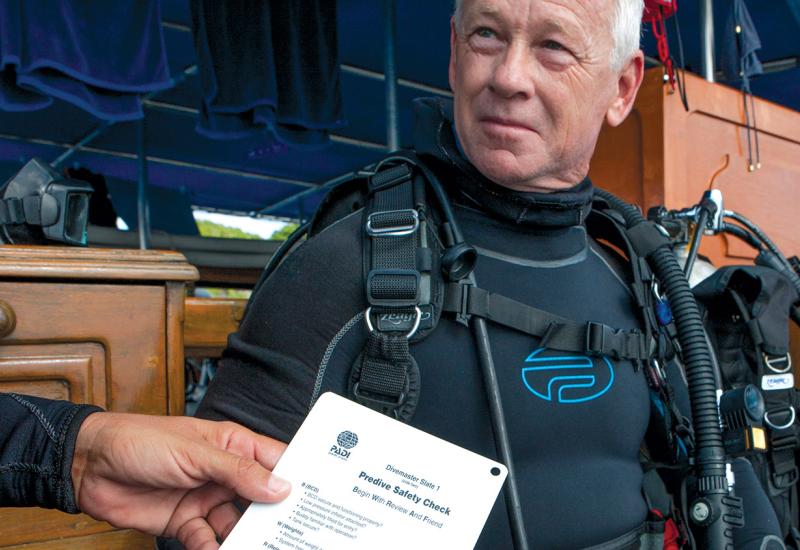Ask DAN: What Is Decompression Sickness?
As a new diver, I’m always asked by my nondiving friends if I’m scared of the bends, or if I can get an air bubble in my brain from diving. I understand the concept of safely ascending during a dive, but I don’t know how to adequately explain decompression sickness. How do you explain DCS?

Courtesy Divers Alert NetworkDecompression sickness explained
Decompression sickness can be a tricky subject to understand. Not to be confused with decompression illness, an overarching term that includes DCS and lung-overexpansion injuries, DCS is one of the primary hazards of diving. Most divers have had a cursory introduction to the risks of DCS and some education on how they can avoid it, but their knowledge typically stops there. A functional understanding of DCS is critical to making safe diving decisions.
Causes
As we dive, we expose ourselves to environments with pressures that are greater than what we experience on the surface. In these environments, the external pressure of the water around us compresses the gas we breathe. The deeper we dive, the greater the pressure we are exposed to becomes, and with it increases the pressure of the gas we breathe. On the surface, the concentration of dissolved inert gas in our body’s tissues is a function of ambient pressure. These gases are not used by our body’s metabolic reactions, and they exist in our tissues in equilibrium with the inert gases found in the air around us. This equilibrium is described as tissue saturation. As we dive and the pressure surround- ing us increases, the amount of inert gas, and the rate at which we can absorb that gas, is increased. The deeper we dive, the more gas we can absorb and the faster we can absorb it. As we ascend and external pressure decreases, gas absorption and uptake reverses. Surplus gas is carried by the blood into the lungs and exhaled outside of the body. If we ascend too quickly, there is no time for gas to be washed away, and excess inert gas may injure tissue where it comes out of dissolution (in areas like the spinal cord and joints), or it may be carried away by the blood and cause symptoms in areas like the brain or inner ear. We classify DCS as mild (formerly called Type 1 DCS) or severe (formerly Type 2 DCS).
Mild DCS (Type 1 DCS)
DCS cases that present with joint or muscle pain, skin rash, mottling, or swelling and without affecting the nervous system are classified as mild. DCS may sometimes start with mild symptoms but worsen with time to include neurological symptoms. Mild symptoms that last for hours without getting worse have a good prognosis and do not have permanent effects on health. Recompression treatment speeds up resolution of symptoms, but in cases when recompression is not available, these injuries can be treated with normobaric oxygen and medical interventions.
Severe DCS (Type 2 DCS)
DCS is classified as severe if it includes neurological, cardiorespiratory or inner- ear symptoms. Symptoms of severe DCS are caused by inert gas bubbles becoming lodged in the brain, spinal cord, pulmonary system or ears. Neurological symptoms may include numbness, tingling in the extremities, muscle weakness, difficulty walking, paralysis or a change in mental status. Inner-ear symptoms most often include hearing loss, vertigo, nausea, impaired balance and tinnitus. Cardiopulmonary symptoms are frequently the result of extreme bubble loads and can include a dry cough, chest pain behind the sternum and difficulty breathing. Severe DCS may progress quickly and result in permanent impairment or, in extreme cases, death. Because of the severity of these symptoms, it is imperative that divers who suspect they have DCS seek immediate treatment before their condition has a chance to decline further.
For more information on decompression sickness, visit dan.org/health.










